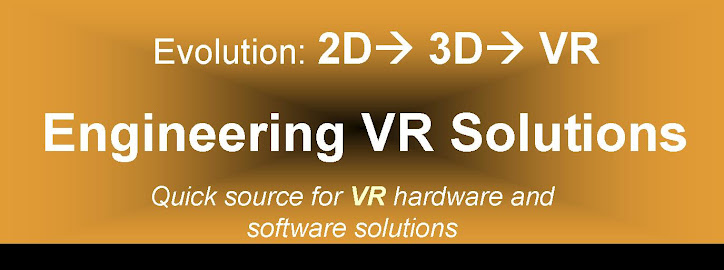So what is virtual reality?
Searchcio, the techi section, gives a definition:
“Virtual reality is the simulation of a real or imagined environment that can be experienced visually in the three dimensions of width, height, and depth and that may additionally provide an interactive experience visually in full real-time motion with sound and possibly with tactile and other forms of feedback.”
Wikipedia has an even weaker definition, but I like the little blip on artificial reality:
“Artificial reality was the term Myron W. Krueger used to describe his interactive immersive environments, based on video recognition techniques, that put a user in full, unencumbered contact with the digital world.”
I don’t think this definition really says much because it is hard for the non-vr geek to really understand the undefined gray areas in this definition. By that I mean it doesn’t obviously differential between virtual reality—vr and regular 3D visualization, which I contend is a big difference and a big deal.
In engineering we are accustomed to using 3D visualization and design applications. They are effectively simulations of real or soon to be real environments. The models are in 3D and we can interact with them using a mouse or keyboard. I would not call this vr and other then very creative marketing reps, usually not engineers, I have never seen a 3D CAD application refer to itself as a vr application.
The big deal about Interaction
The reason and differences lay in the mysterious word “interaction”. Although with a viewer you can view a comprehensive 3D CAD model; you are not really interacting with the model. Actually you are just looking at the model. Some people may think that this is a form of interaction, which is like saying watching someone on TV is equivalent to interacting with you.
Interaction implies involvement from both parties. See what Bill says: http://encarta.msn.com/dictionary_/interact.html
Also, here is a website that I found with a list of CAD viewers:
http://www.tenlinks.com/CAD/PRODUCTS/viewers.htm
So the model and the person are interacting. If the application uses an avatar then this is very easy to understand. The users is represented by the avatar, which moves in the model and is acted on by simulated effects—i.e. gravity, an explosion or another users avatar.
If the application does not use an avatar then this can be done through immersive 1st person interaction, in which case the user sees the model through the eyes of the avatar.
This get very complicated for modular vr simulations, like the ones used in the medical field or for product design and testing. What is the difference between a 3D view of a brain and a virtual reality view of the brain? I would again contend that it is the interaction. Both models can show a 3D view of the break, but the vr model would allow the doctor to interact by opening sections of the brain or simulating an operation, for example.
Here is a VR project for brain dissection:
http://ect.downstate.edu/courseware/vr_brain/
For engineering model design or rather simulation, such as a car door, the vr model would again allow interaction. An example of this is virtually opening the door or virtual manufacturing and fitting the door to the body.
Your comments keep me from distributing un-contested information!!
Friday, December 28, 2007
3D VR versus 3D?
Posted by
VR_blogger
at
2:30 PM
0
comments
![]()
Labels: CAD, CAM, engineering design, virtual environment, virtual reality, VR
Subscribe to:
Comments (Atom)
